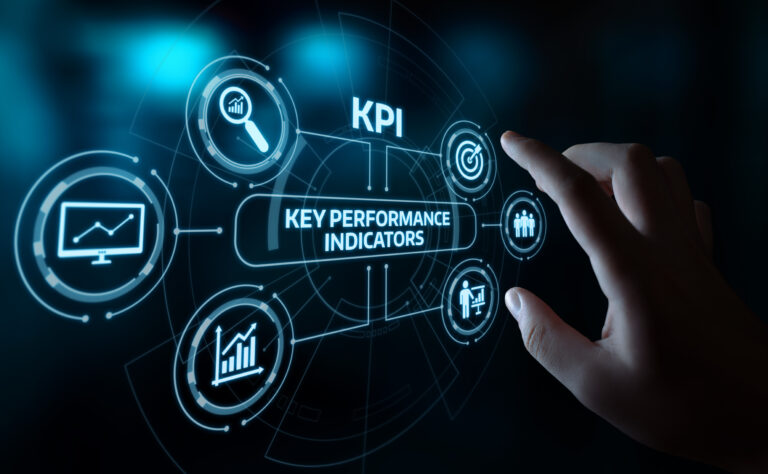The ‘Gram and Beyond: Platforms for Brand Growth
It’s not news that the most successful brands have presences on social media. While it may have once seemed somewhat tawdry and plebian to conduct a serious ad campaign on the same platforms that people use for bathroom selfies, political rants, and cat updates, the game has changed. A company without a social media account is not just bucking the trend; it’s a veritable relic of the Stone Age. Luxury brands like Chanel, Hermes, Louis Vuitton, Dior, and more have official Instagram and Facebook pages on which they promote products, offer deals, advertise, and interact with customers. Many brands even have Snapchat accounts.
People today are less likely to see an advertisement in a newspaper or magazine than they were just 10 years ago. That not to say that print journalism is totally moribund, but it’s certainly no longer sufficient to limit your advertising and customer outreach to the local paper, glamor magazines, and billboards.
As alluded to, two of the most popular venues for brand and product promotion are Instagram and Facebook. It’s crucial that businesses of all sizes and in all sectors understand which strategies are most commonly deployed on these forums, as well as how they work.
Currently, Instagram is arguably the most important social media arena for brand building. A 2018 article in Forbes included enlightening statistics about just how pervasive and effective brand marketing on Instagram has become. Article authors Saad and Rosenberg noted that:
- “80% of Instagram users voluntarily connect with a brand on Instagram”
- “People engage with brands on Instagram 10x more than Facebook, 54x more than Pinterest, and 84x more than Twitter”
- • “71% of brands have accounts on Instagram, because when people follow a brand 75% are more likely to take action.”1
Cultivating social currency is the reality on Instagram, and the more followers an account amasses, the better. In the case of companies, the relationship between followers and profit is fairly intuitive: the more followers, the wider the reach of their message, which translates into a larger base of potential customers and, theoretically, more sales. Red Bull, Warby Parker, and Sephora are just a few companies with highly-effective Instagram marketing strategies.2
Individuals known as “influencers” use their star power to make money by a slightly more circuitous route. Companies will often offer an influencer something for free in exchange for the influencer promoting it on his or her profile. This can be a meal at a restaurant, clothing items, makeup, cooking products, weight-loss supplements—you name it. If the influencer has enough followers, then some companies will even pay money to be sponsored in a post.4 Forbes’s profile of Swedish influencer Rachel Brathen, better known as “Yoga Girl,” reports that she can charge up to $25,000 per post. Kylie Jenner’s ubiquity on Instagram has allowed her to market her lucrative beauty line. In fact, it’s probably fair to say that Jenner’s clever use of Instagram is the biggest factor in her meteoric rise from out of her sister’s shadow and into the position of youngest “self-made” billionaire. There’s no question that followers can translate into money in a very real way.
In order to project the success that increases brand desirability and boost sales, or to score endorsements, companies and influencers employ many tactics to cultivate a large following. They optimize hashtags, post timing, and tagging in order to ensure that their target audience is likely to see what they’ve shared. Some use the story feature of Instagram to generate hype about upcoming products, expos, events, and more. Most of these approaches have few to no downsides. However, the same can’t be said about all strategies.
Comment Bots
Certain like-aggregating tools must be wielded very carefully so as not to backfire. Perhaps the most notorious example is the comment bot. Sometimes, Instagrammers—be they companies or individuals—buy bots to follow their accounts, thus artificially inflating their numbers. However, as detailed in a 2018 article on Venture Beat, this can have unintended negative consequences, largely due to the fact that most bots are not sophisticated enough to factor in context. This results in the occasional awkward and even offensive comment.4
In simplest terms, Instagram bots are algorithms that have been optimized to locate targets that fall within the parameters specified by the bot-deployers, such as “travel influencer” or “wellness products.” Most bots crawl through Instagram, looking for posts with specific hashtags. For instance, a swimwear company may program a bot to search for #beach, #seaside, #sunshine, #swimming, #bikini, #boating, #water, etc. The bot is then instructed to leave a generic (or, at most, beach-themed) comment that may or may not instruct viewers to check out the swimwear company’s page.
If these bots’ technology was sufficiently sophisticated—a neural network language processing program capable of identifying sarcasm—the bots might be capable of leaving meaningful, individualized comments. However, at least as of the present, almost no company or influencer is willing to invest in something so high-tech and expensive for the purposes of Instagram campaigns. Instead, they stick with the cheaper, simpler programming, even though it’s more likely to commit faux pas.
Almost everyone who uses hashtags on a public Instagram account has experienced computer-generated comments from bots: generic, devoid of meaningful content, and often mildly annoying. Such comments are typically some variation on the following:
“Wow, great perspective! Follow back.”
“Nice shot! Check out my story!”
“Hello from the other side of the world!”
“Love your page! Take a look at mine if you have time!”
Or even just “Love it!” or “Nice!”
Most of the time, asinine comments such as these are harmless. Though they might not inspire viewers to click on the page being advertised by the bot, neither will they hurt the brand. On rare occasions, though, the bots’ tone deafness can insult Instagram users. The Venture Beat article expounds upon one particularly upsetting example in which a woman posting about her miscarriage was barraged with bot comments like “More of this please!” and “Very nice!” Chances are, this woman, her relatives, and others who know of her story will not give the brands behind these bots a second chance.
To avoid such PR disasters, some companies and influencers hire social media coordinators whose responsibilities include seeking out pages with overlapping interests or markets and commenting on their posts. While this takes more time and money, the results are almost always going to be more personalized and appealing to Instagrammers.
The Verdict on Comment Bots
None of this is to say that bots are always, without exception, a bad idea for your business. Rather, stories like the one above should prod companies and influencers to seriously weigh the pros and cons of incorporating bots into their advertising strategy. Because algorithm-generated language is broad enough to fit any kind of photo—be it a perfectly foam-crested cappuccino or a stunning sunset—it’s not too difficult for an Instagrammer to discern between human versus computer-generated comments. Evaluate if the time and money-saving benefits of bots outweigh the risk of brand-damaging comments or the cost of employing a human for the job.
Other Bots
Considering the myriad applications of programming, it should come as no surprise that there are other kinds of bots out there. Another popular genre of bot that businesses use is the sentiment analysis bot. Like their commenting counterparts, these bots also crawl across social media like Instagram. However, they don’t leave comments on accounts. Instead, they collect information. Next, they filter the info they’ve collected and use category recognition to sort the data into useful formats for businesses to analyze. For instance, if Marriot wanted to understand what hotel guests think about accommodations, service, prices, and food (in general and in particular for Marriot chains), they might use a bot programmed to gather such information.
Again, one limitation of such bots is their general inability to recognize sarcasm. However, most analysts assume that the percentage of people leaving sarcastic reviews is statistically insignificant, such that sentiment analysis bots usually give an accurate representation of customer and client opinion. As such, these bots can provide information crucial to making your service or product more appealing. Many such bots are deployed on Instagram, but they are also used on other venues like Twitter and Facebook.
On that note, Facebook—which now owns Instagram—is another behemoth in the world of online advertising. A caveat: Pew Research Center reports that Facebook has lost much of its ground in the last 4 years to Instagram, YouTube, and Snapchat, with just over 50% of US teens ages 13-17 having an account.5 Furthermore, Facebook users in this age bracket are more likely to have less disposable income, meaning that ads for expensive products are less likely to be within their budget.
Nevertheless, Facebook is still a major social media platform with daily traffic in the billions, so most brands—be they luxury clothing or podcasts—have a page. For one thing, if you or your company is hosting an event, Facebook is one of the best places on which to advertise and promote it. Comparable event promotion and management features are not yet extant or as popular on Snapchat, Instagram, Pinterest, and the like.
While comment bots exist for Facebook, they do not seem to be a prevalent as they are on Instagram. Perhaps the more well-known promotion strategy on Facebook is advertisement. Facebook ads are relatively salient, popping up in newsfeeds and sized similarly to a status update or a shared article. With a clear call to action, optimized keywords, and an appealing image, Facebook ads can be incredibly effective.
As with most things, algorithms come into play here, because Facebook ads are, in theory, shown to those most likely to be receptive to them. Someone who frequently likes pages associated with, comments on, and makes status about the outdoors is more likely to see a Patagonia ad than a Dior ad in his or her newsfeed. Customers also have the option to hide ads and give feedback, such as “not relevant,” which helps Facebook refine the content presented to specific users.
Other Platforms
It almost goes without saying that there is a plethora of other virtual locations where brands interact with potential clients: Twitter, Pinterest, YouTube, and Snapchat are just a few. The latter is especially popular with Gen Z. A well-timed Snapchat story can do absolute wonders for your brand amongst teenagers with a smartphone.
Conclusion
Even though representations on social media are often idealized, filtered versions of life and products, they are, somewhat ironically, one of the best ways to make your brand relatable to a growing contingent of the market. Take the time to investigate the social media usage trends of your target demographics, and then implement the appropriate strategy on the platforms they are most likely to use. More than likely, such investment will pay for itself many times over.
1“How to Build a Thriving Brand Presence on Instagram,” Forbes, January 16, 2018
2“25 Fantastic Examples of Brands Using Instagram,” Entrepreneur, October 24, 2016
3Rachel Brathen, Forbes
4“Instagram Bots Can Ruin Your Brand,” VentureBeat, February 18, 2018
5“Teens are Abandoning Facebook in Dramatic Numbers, Study Finds,” The Guardian, June 1, 2018




